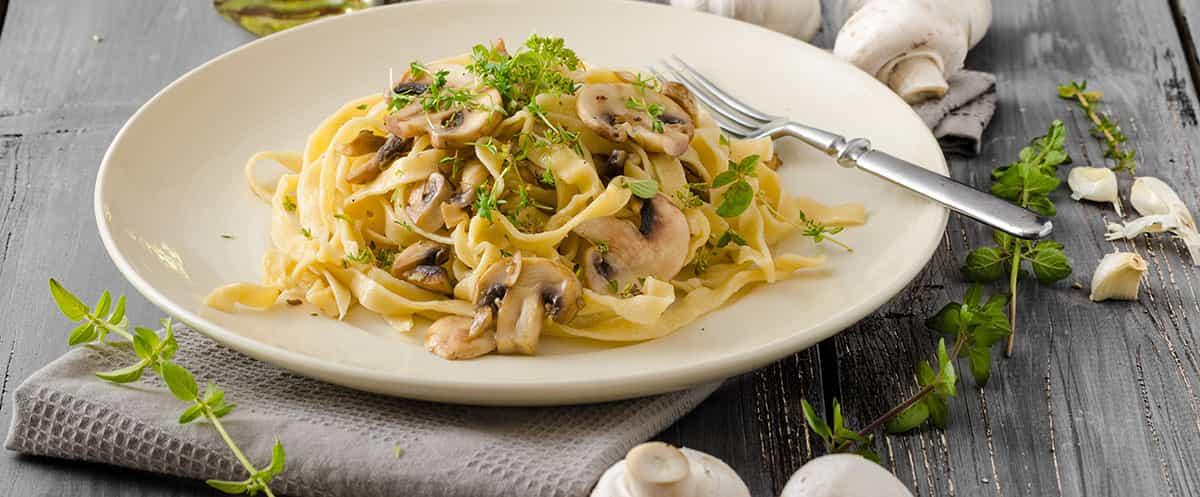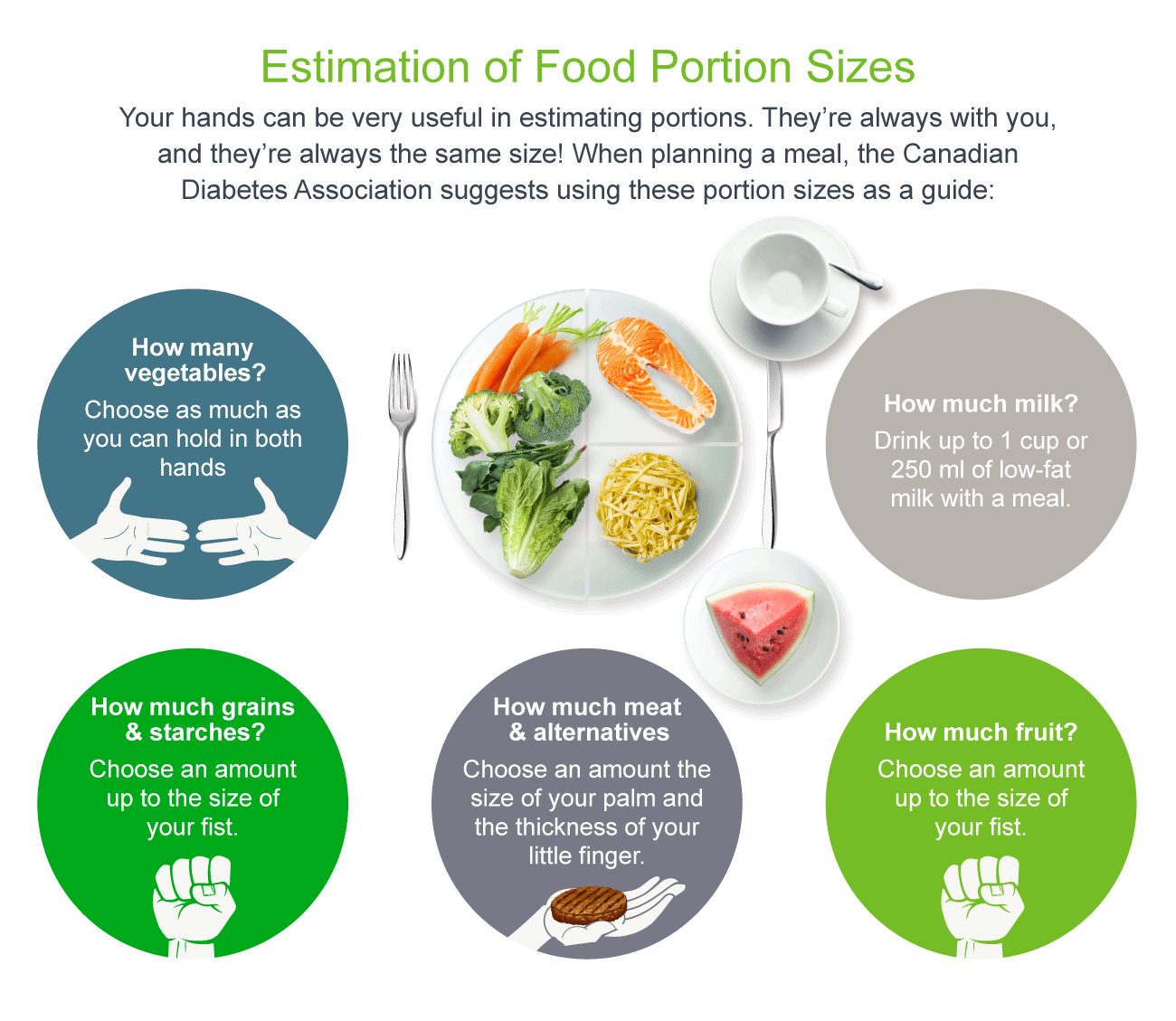
Food has a direct effect on blood glucose. Some foods raise blood glucose more than others. An important part of managing diabetes is knowing what and how much to eat, and following an eating plan that fits your lifestyle while helping to control blood glucose. The three main nutrients found in foods are carbohydrates (carbs), proteins and fats.
Carbs are the starches, sugar and fiber in foods such as grains, fruits, vegetables, milk products and sweets. They raise blood glucose faster and higher than other nutrients in foods: proteins and fats. Knowing what foods contain carbs and the amount of carbs in a meal is helpful for blood glucose control. Choosing carbs from healthy sources like vegetables, fruits and whole grains (high fiber) are preferred over carbs from sources with added sugars, fat and salt.
Proteins are a necessary part of a balanced diet and can keep you from feeling hungry. They do not directly raise your glucose like carbs. However, to prevent weight gain, use portion control with proteins. Using 15 grams* of fast-acting carbs that contain glucose, like juice, other sugar-sweetened beverages, glucose gel or tablets is the preferred way to treat low blood sugar.
Fats are necessary part of a balanced diet, especially healthy fats from fatty fish, nuts and seeds. They do not raise blood glucose but are high in calories and can cause weight gain.
Aim to include all three nutrients to balance your meals.
Your dietitian or diabetes educator can help you develop an eating plan that is right for you and fits into your lifestyle. Healthy eating for diabetes is healthy eating for the whole family.
Here are some guidelines for healthy eating:
Your choice of food and how much you eat is relative to your blood glucose level. If you eat more than you need, your blood glucose will rise. To help manage your diabetes, having a good sense of portion control is an important skill. Luckily, you already have some tools — your hands.
The Canadian Diabetes Association suggests using this portion size guide:

* MedlinePlus. 15/15 Rule. National Institute of Health (NIH)/U.S. Library of Medicine. Bethesda, MD. Last accessed online September 24, 2019
American Diabetes Association. (ADA) Standards of Medical Care in Diabetes–2019. Diabetes Care 2019; 42, Suppl. 1. Last accessed online September 24, 2019
Canadian Diabetes Association (CDA) Portion Guide: Your hands can be very useful in estimation portions. Last accessed online September 24, 2019
National Institute of Diabetes and Digestive and Kidney Diseases: Carbohydrate Counting & Diabetes. Last accessed online September 24, 2019
US-VRF-1900022